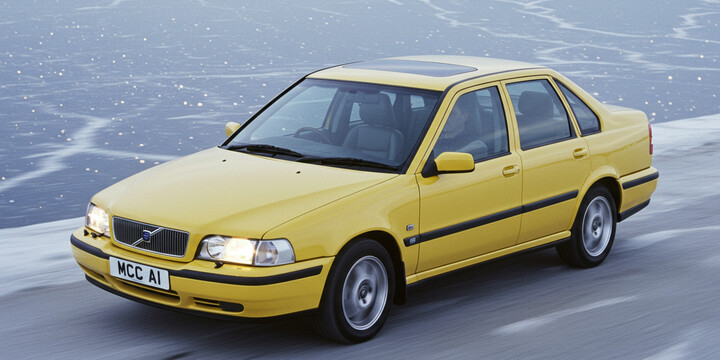
VOLVO S40 (1996-04) 4DR SALOON 2.0 SPORT LUXURY AUTO
The VOLVO S40 (1996-04) 4DR SALOON 2.0 SPORT LUXURY AUTO is a stylish and practical sedan that appealed to drivers seeking a refined driving experience with a touch of luxury. Positioned within the compact executive market, this model is known for its sleek design, solid build quality, and reputation for safety and reliability. The S40's reputation for durability makes it a popular choice among families, commuters, and those looking for a dependable used car. Its comfortable ride and smooth automatic transmission enhance everyday driving, making it suitable for daily commutes or longer trips alike.
What sets the VOLVO S40 2.0 SPORT LUXURY apart is its combination of comfort, safety features, and a refined driving experience that rivals other compact saloons of its era. The model is often praised for its low running costs, moderate fuel economy, and the high-quality interior that offers a touch of luxury. With an average mileage of around 128,697 miles and typically seen with about three previous owners, the S40 holds its value well and remains a competitive choice in the used car market. Whether you're a first-time buyer or someone seeking a reliable, family-friendly saloon, the VOLVO S40 (1996-04) 2.0 SPORT LUXURY AUTO continues to be a noteworthy vehicle worth considering for its safety, comfort, and enduring appeal.

average use

The most recent mileage data for the sample of Volvo S40 vehicles shows a fairly evenly distributed spread across five ranges, each accounting for around 20% of the sample. Notably, the mileage appears spread across both lower and higher ranges, from 40,000 to 50,000 miles up to 190,000 to 200,000 miles. This suggests a diverse usage history among these vehicles, with no predominant mileage category. Such a distribution indicates it’s common to find these vehicles at various stages of their lifespan in the used car market.

vehicle values

Based on the available data, the private sale valuation for a Volvo S40 (1996-04) 4-door saloon 2.0 Sport Luxury Auto is uniformly priced within the £0 to £1,000 range. This suggests that, at least within this dataset, private sales of this vehicle are generally valued below £1,000, indicating a relatively low market value for this model in the private sale sector. The data does not provide finer granularity within that range, so further information would be needed to understand the typical sale price or any significant variation.

production years

The data indicates that most of the Volvo S40 models from 1996 to April 2004 in our sample were manufactured in 2004, accounting for 80% of the vehicles. Only a smaller proportion, 20%, were produced in 2002. This suggests a significant concentration of the vehicles in the later years of the model's production, possibly reflecting higher availability or popularity of the 2004 model year in our dataset.

colour popularity

The data indicates that among Volvo S40 models from 1996 to 2004, green is the most common main paint colour, accounting for 40% of the vehicles. Silver and grey are equally prevalent at 20% each, while blue is also at 20%. This suggests a preference for vibrant green vehicles within this model range, with more traditional colours like silver and grey being less common but still significant.

ownership cycle

The data indicates that the number of registered keepers for the Volvo S40 (1996-04) 4DR Saloon 2.0 Sport Luxury Auto varies widely, with no single figure dominating. Specifically, vehicles with 2, 3, 4, and 5 registered keepers each represent 20% of the sample, while those with 7 keepers also account for 20%. This suggests a relatively balanced distribution of ownership histories, with a notable spread across different keeper counts. Such variation might reflect differing usage patterns or ownership change frequency for this model.

engine choices

The data indicates that all Volvo S40 models from 1996 to 2004 with a 2.0 Sport Luxury Auto engine are powered by a 1,948cc engine, representing 100% of the sample. Additionally, the primary fuel for these vehicles is predominantly petrol, accounting for 80%, while a notable 20% are gas bi-fuel variants. This suggests that while petrol remains the main fuel type, a significant minority of these vehicles are equipped for bi-fuel operation, potentially offering more flexible or economical fueling options.












